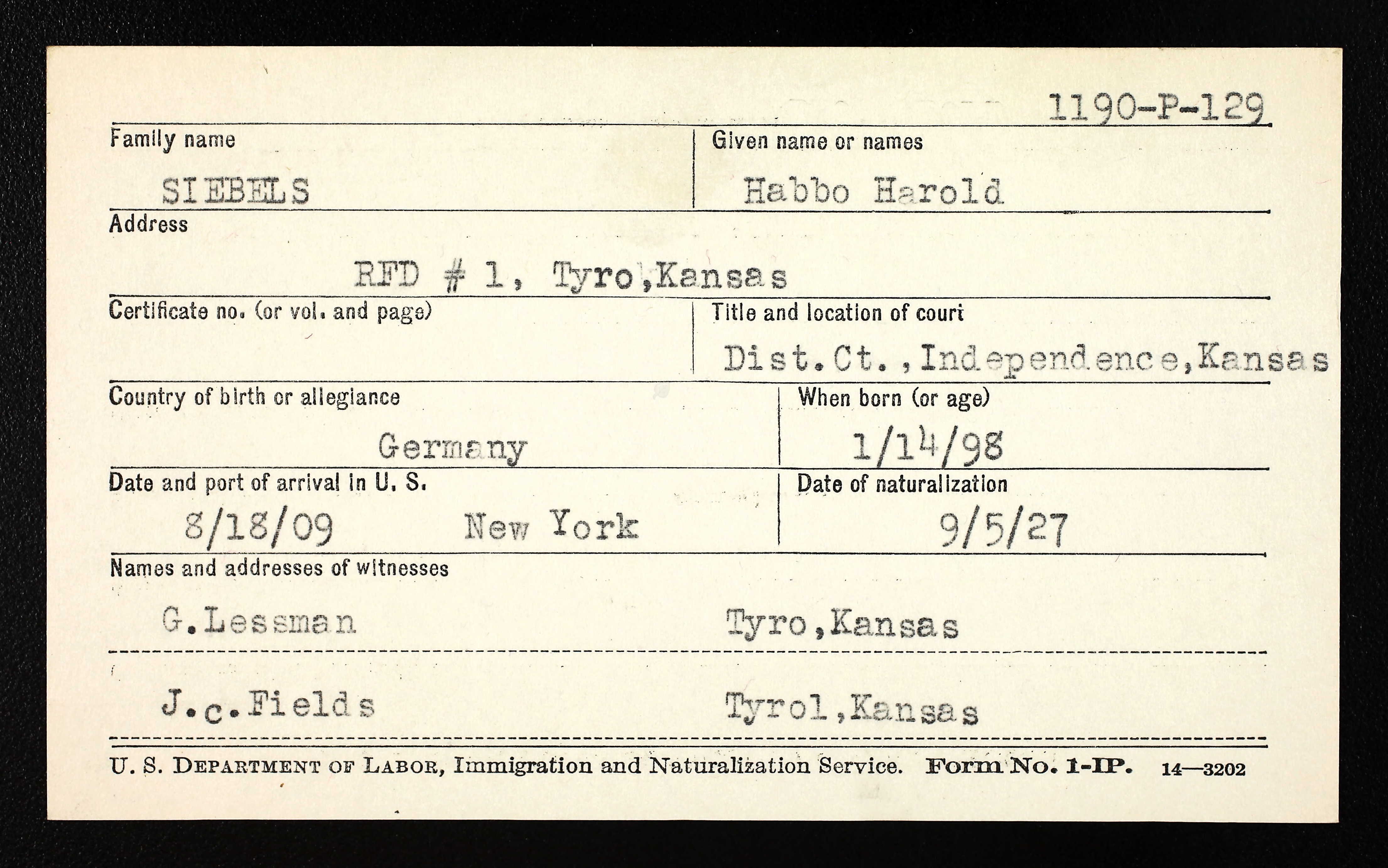
Contained in NARA record group 21, National Archives Identifier 572253. Digital image on Ancestry.com.
This card was used as an illustration for a Genealogy Tip of the Day recently. It generated a fair amount of discussion, so we’re discussing it here in a little more detail.
What is this?
The cards and their origin were discussed in a post yesterday at Rootdig. Researchers should always find out about the record they are using, how it was created, what its purpose was, how it was organized, etc.
When was he born?
The date of birth is listed as 1/14/98. One may be tempted to think something is off with the date of birth when compared to the date of arrival and date of naturalization. The 1/14/98 reference is likely to 14 January 1898. All dates given on the card (and most of the cards if one takes a look at others) have two digits for the year of birth. Most of these cards were created in the middle portion of the 20th century. They knew what they meant when they indicated the year was ’98 and they were not concerned about someone using the card eighty years later. The card should be transcribed as written with annotations made as appropriate.
Why digitize the index? Aren’t the original records better?
Of course they are–when extant. And this card should be used as a stepping stone to the original record. That original record may contain more information or may indicate that information has been transcribed incorrectly (the middle name of Harold looks a little suspect to me based upon what I know of this family).
As mentioned in the post about these records, the cards were created to create an index to naturalization records from a variety of courts. It is possible that now, years after the index was created, that the originals are no longer extant, are not as legible, can’t be accessed, etc. That’s another reason for preserving finding aids of this type–they may be all that exists of the records for some individuals. That won’t be known until the researcher tries to locate the actual record.
Why didn’t Ancestry.com digitize the original records?
The short answer: these records were easier to digitize. These index cards were National Archives records and were easier to digitize than the original naturalization records. The originals were created by courts in Missouri, Oklahoma, and Kansas. Some may be available through FamilySearch either digitally or on microfilm. Filming or digitizing those records requires the permission of the current holder of the records and, while it should be done, will take longer. It was easier and faster to digitize these records. And for reasons discussed elsewhere in the post: these index cards are worth preserving as well.
Tyro or Tyrol?
The card should be transcribed as written. Tyrol is likely an incorrect reference to Tyro, Kansas. Transcribers may wish to insert a “sic” after the incorrect reference to indicate that the transcription of the card was made as is.
What if the original cannot be found?
Then this card can be used. There’s not reason to doubt the essence of what’s on the card, but any piece of information on it could be incorrect. If we use this card as evidence of an individual’s naturalization, we should make it clear in our citation that this card is what was used and not the original record. Our notes should indicate what searches were conducted in order to locate the actual naturalization record.

No responses yet